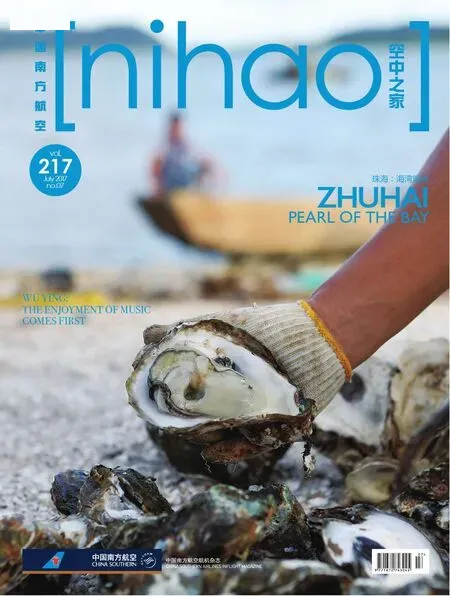New Wave of Cantonese Cuisine
Text by Zhuzhu and Jiefu &Lan Xiaojiang Photos by CFP Translation by Bian Jiajin
New Wave of Cantonese Cuisine
Text by Zhuzhu and Jiefu &Lan Xiaojiang Photos by CFP Translation by Bian Jiajin

Guangdong is located in a subtropical area, where the climate is warm nearly all year round and the plants are always green and flourishing. Guangdong is rich in all kinds of products, from which benefi ts the dietary culture in Guangdong. The refined and sophisticated ways of cooking, the fresh food materials and the clean and light tastes of the foods are all the unique characteristics of Cantonese cuisine. Among the local cuisines, Chaozhou Cuisines are rather approved by food lovers and have an outstanding position among all Chinese foods.
From the opinion of different food lovers, the image of Chaozhou Cuisine can be very different. Some love the steaming beef hotpot; some love the tasty sauced goose heads; others may love the chilling cold night tapas……As for this, Zhang Xinming, the counsellor of the series documentary A Bite of China and the President and Secretary of Shantou Food Association, argues that the different impressions and images of Chaozhou foods among food lovers show the diversities of different schools and branches of Chaozhou Cuisine, which is also the result of fulfi lling the needs to be in accordance with the development of Chinese economy, society and culture. In the 1980s, the cheap Chaozhou cold tapas returned to the markets of the Guangdong area from Macau and Hong Kong, including some cities like Guangzhou. Since the end of last century and the beginning of the 21st century, Chinese economy has developed greatly. People started to pursue a higher quality life. Chaozhou Cuisine, thus, started to seek the refi ned and luxurious side of eating.
To show the plentiful and variety of Chaozhou cuisines, Chaozhou people use “The Tasting of Twelve Courses”, and among these Twelve are mainly hard courses that are made of highend materials such as goose liver, fi sh maw, abalone and lobster. The ways of cooking could be scalded, cured, fi sh-riced or sauced. They look very simple, but they are actually full of a chef's innovative thoughts. Even the uses of toppings, seasonings, side dishes and the degree of heating are very precise. For instance, to cook a plate of scalded neptune shells, it will be topped with chicken soup that has been stewed for a long time before fi nally presenting the fi nished dish to the table. This can make the fresh and sweet fl avour of the shells stand out. In another course Wild Seaweed Soup with Neptune Shell meats, the seaweeds must be fi rstly roasted, for being roasted can break the cells of seaweeds in a natural way and enhance the smell. In a cold tapas Fish Rice, the fresh fi sh is iced and directly sent to the table. After taking several bites, it could feel a little greasy, then you can dip it with some Puning soy sauce. The yeasting sauce can gently set off the sweet and elastic fi sh, giving more extraordinary charm of taste for fi sh rice.
In the Chaozhou fete, the foods are sometimes served with wine. During the 1980s, it was very popular to serve with western alcohol at the fete, which became an inspired extra to Chaozhou Cuisine.This culture was becoming more and more infl uential in the Chinese dietary consuming markets with the input of a large amount of western liquids. Many old dietary lovers will combine the famous Chaozhou-Shantou courses with the drink on their own when they write their personal thoughts and ideas on Chaozhou Cousine. This kind of combination, from the red wine and white wine in earlier time to the high-end western cognacs becomes more diverse and the classifi cation gets fi ner, evolving into a high quality international direction.

